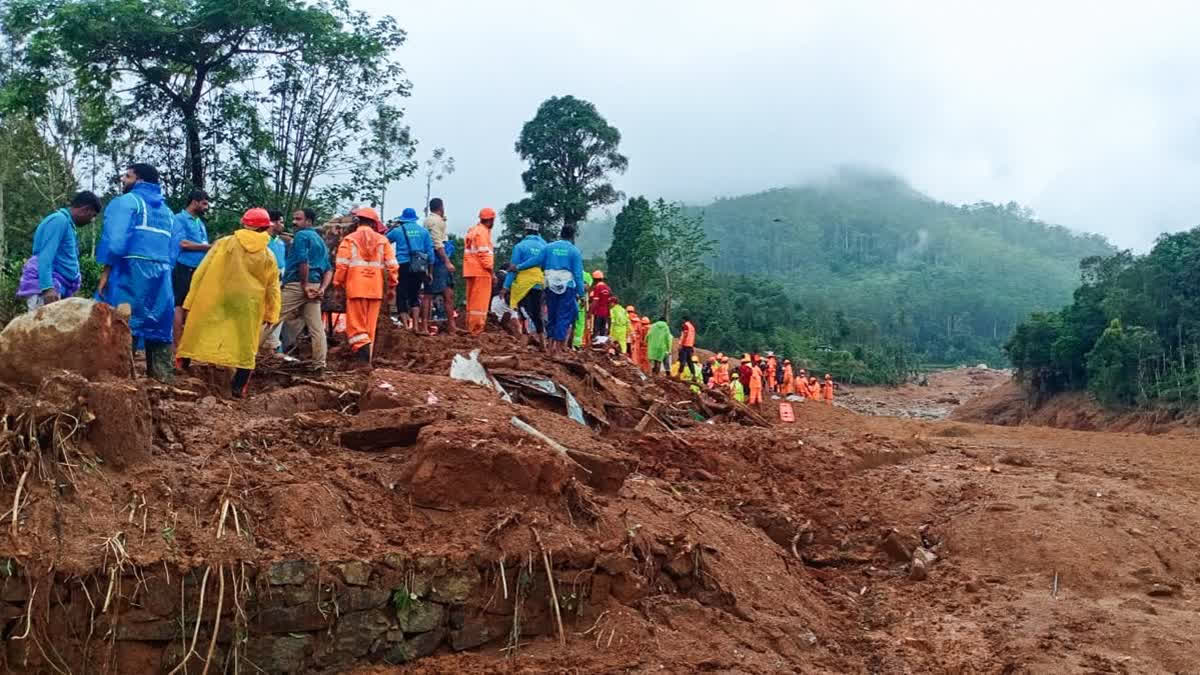Wayanad: In the wake of devastating landslides that struck the Wayanad district in Kerala, the region is reeling from a catastrophic toll, over 300 lives lost, hundreds missing, and widespread devastation affecting residential areas and the Chaliyar River basin.
Since the disaster unfolded in the early hours of July 30, a massive rescue operation involving over 1,300 personnel, advanced radar technology, and strategic infrastructure like the Bailey Bridge has been mobilised. These efforts are crucial as teams from the army, police, and emergency services, alongside private firms and volunteers, navigate treacherous conditions to recover bodies buried under debris.
As recovery operations intensify, Kerala state authorities have issued guidelines for the dignified handling and burial of remains, underscoring the gravity of the humanitarian crisis unfolding in Wayanad.
the rescue mission, coordinated by the army, police, and emergency services, has been further bolstered by the participation of private search and rescue firms. However, rescue efforts have been severely hampered by enormous boulders and logs strewn across residential areas in Mundakkai and Chooralmala, complicating the search for those believed trapped beneath the rubble.
In response to the crisis, the district administration swiftly divided areas into zones, deploying GPS mapping and aerial reconnaissance to pinpoint potential rescue sites. Ground penetrating radar and cadaver dog squads have been mobilised to locate bodies buried deep within the debris.
Medical professionals, including teams from the armed forces and civilian sectors, remain on standby with ambulances poised to provide critical aid. The recent construction of a 190-foot-long Bailey Bridge by the army has proven instrumental, facilitating the movement of heavy equipment and enhancing accessibility to the disaster zones until a permanent bridge can be established.
Meanwhile, along the 40-kilometre stretch of the Chaliyar River traversing Wayanad, Malappuram, and Kozhikode districts, ongoing rescue operations have resulted in the recovery of hundreds of bodies and body parts. The riverbanks have become a focal point for recovery efforts, reflecting the scale of devastation wrought by the landslides.
In a significant development, advanced deep search radars, including xaver and Reeco models, are set to be deployed. Arriving via Indian Air Force transport from Delhi, these radar units are expected to enhance the effectiveness of ongoibed rescue operations.
in addition, the Kerala state government issued guidelines saying that each body or body part recovered is to be assigned a unique identification number, with stringent protocols in place for the collection of DNA and dental samples to aid in identification. The guidelines emphasise respectful burial procedures under the supervision of local authorities, ensuring meticulous documentation of burial sites for future reference.
As the community grapples with the overwhelming scale of loss and devastation, authorities continue to urge caution and adherence to safety protocols in the affected areas.



